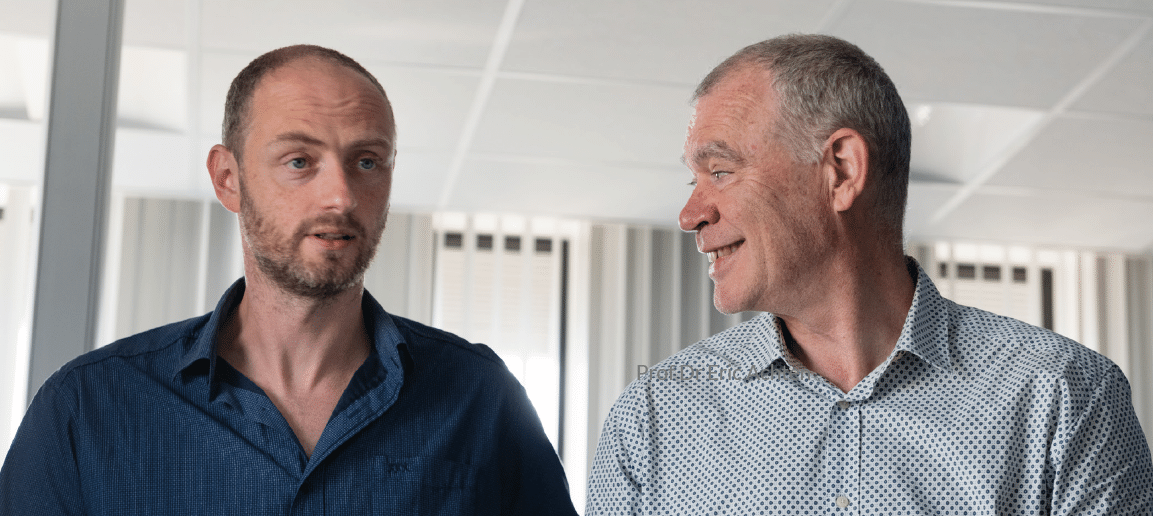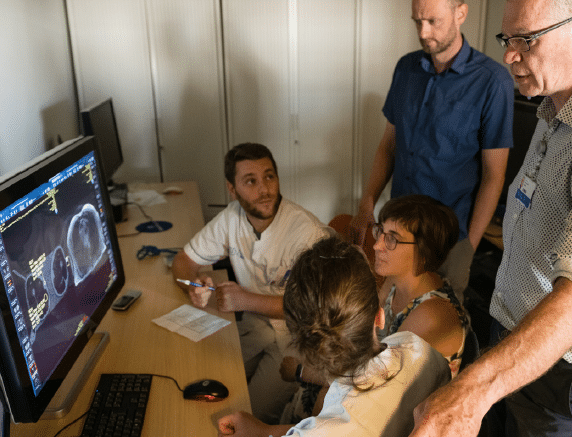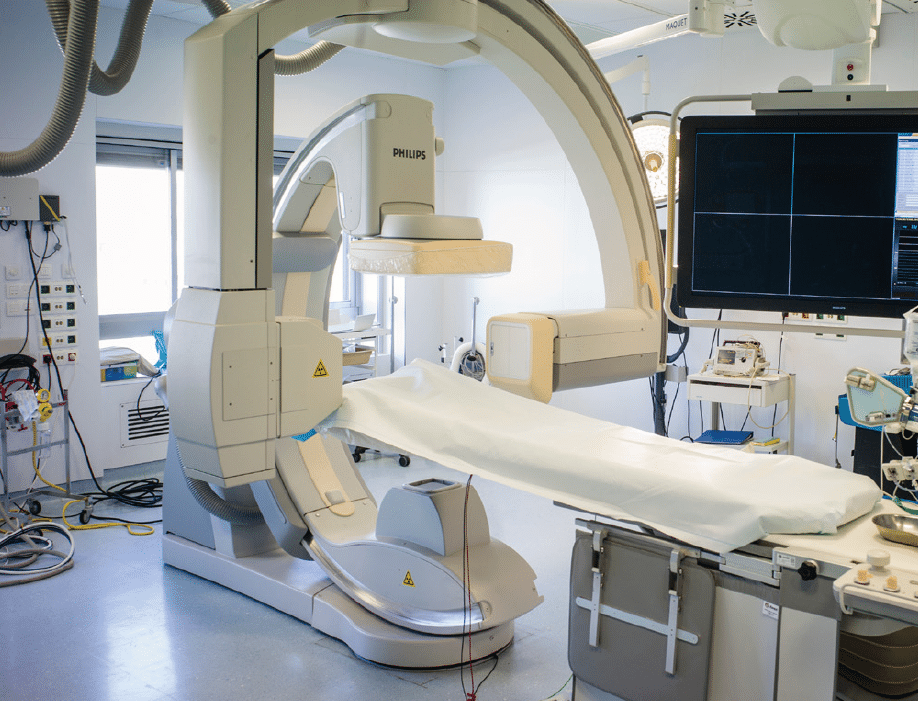Customer Case Study
Ghent University Hospital Enterprise Imaging platform

Ghent University Hospital upgrades from two IMPAX systems to consolidated image management, with features that enhance productivity, mobility, collaboration and teaching.
For busy Ghent University Hospital, Belgium, a consolidated image management platform and a host of new functionalities are changing how image and data management impacts the hospital’s diverse responsibilities: to its care professionals, the referring community, students and patients. Prof Dr Eric Achten, Neuroradiologist and Head of Department of Radiology and Nuclear Medicine, together with Pieter Devolder, the department’s IT manager, explain how Enterprise Imaging is bringing all images from all departments together. And beyond that – how it is also speeding up reading and reporting of imaging studies, enhancing multidisciplinary collaboration, supporting the hospital’s teaching duties, and much more.

Pieter Devolder
IT manager Department of Radiology
and Nuclear Medicine
Prof Dr Eric Achten
Neuroradiologist and Head of Department of Radiology and Nuclear Medicine
Creating an enterprise-wide imaging ecosystem
Since 2011, this 1061-bed, 6000-staff hospital has managed its medical images and data with a pair of AGFA HealthCare IMPAX systems: one for radiology and nuclear medicine, and a second, ‘light’ version for images from all other departments.
A shared archive centralized image storage. “This set-up enabled us to support different departmental workflows and requirements, such as billing,” describes Pieter Devolder.
“There is no doubt that the radiologist’s role will chang: from ‘simply’ diagnosticians to physician consultants. We need to be prepared.’
“The IMPAX systems themselves worked very well,” explains Prof Dr Eric Achten. “But we wanted to move towards a single, consolidated platform. Enterprise Imaging offered us many new functionalities with an impact not only on how we work, but also on our role as radiologists.”
Maximizing imaging through collaboration
Outside of radiology, the effects are also being felt. “The collaboration and conferencing tools are much appreciated. For example, when preparing multi-disciplinary oncology consultations, everyone can review the imaging exams ahead of time,” comments Prof Achten.
And with the XERO Universal Viewer integrated in the electronic health record (EHR), clinicians can open an exam and immediately see the results. Pieter Devolder: “XERO is now being used for all DICOM images, including ultrasound. We plan to extend this to all images – including those captured with mobile devices (smartphones or tablets), such as in the dermatology department.”
From ‘diagnostician’ to ‘physician consultant’
With Enterprise Imaging up and running, Prof Dr Eric Achten is confident about meeting current and future needs. “There is no doubt that the radiologist’s role will change: from ‘simply’ diagnosticians to physician consultants.
We need to be prepared. We are confident that we are working with the right partner, who can offer a future-proof system and help us to integrate new technologies and tools in our workflow and hospital-wide image management environment.”
“I estimate that with Enterprise Imaging, reading and reporting is around 50% faster.”

A more productive environment, day-to-day
“Our team of diagnosticians were looking forward to the new functionalities, and were not disappointed,” Prof Dr Achten continues. He describes some of the functions supporting day-to-day workflows:
A more productive environment, day-to-day
- “Radiologists, nuclear medicine physicians, technologists and administrative staff now have their own desktops with the functionalities they need, neatly presented on dedicated work screens.
- Reading and reporting have been significantly sped up – I estimate it’s around 50% faster.
- There is no need to open a word processing application to create reports.
- If you interrupt and shut down your task, when you reopen it, you can start back right where you were.
- I created hanging protocols for the most common CT and MRI exams I perform. My fMRI exams open witha 3D reconstruction, a multiplanar reconstruction at different angles, …
- Diagnosticians can now work from home with a VPN connection and secure login. About 15 diagnosticians have full-blown workstations at home, while all of them can access image studies remotely with the XERO Universal Viewer.
- Within the hospital, we no longer lose time tracking down admitted patients. For instance, when a patient comes into the emergency department, and is then transferred to another department, we can see where they are, so we can quickly contact the right ward with our diagnostic findings that require attention.”
Close cooperation
for project management
Very close project management and preparations between Ghent University Hospital and AGFA HealthCare ensured a smooth implementation and successful ‘go-live’ of Enterprise Imaging. Pieter Devolder: “Don’t underestimate the importance of having a knowledgeable project leader. We worked closely together to finetune processes, for example, some of which had to be aligned across the enterprise. Everything stayed under control, however, and the various small issues that always crop up in such major projects were quickly solved.”
Putting artificial intelligence
to work for patient care
Prof Dr Eric Achten: “Self-learning algorithms offer tremendous opportunities in many domains, including radiology. This artificial intelligence will definitely change how radiological services are delivered. AGFA HealthCare is investing in these new technologies, and for example, is working on an algorithm for detecting tuberculosis. Tools like these can make a real difference, and as they become available we will integrate them into the Enterprise Imaging platform, and thus into our own workflows.”
“Self-learning algorithms offer tremendous opportunities in many domains, including radiology. This artificial intelligence will definitely change how radiological services are delivered.”

AGFA HealthCare’s contribution
AGFA HealthCare’s contribution
- The Enterprise Imaging secure, scalable, consolidated platform allows the integration of images and documents into the electronic health record (EHR) and removes barriers to data sharing.
- The rules-based workflow engine keeps tasks flowing to the user, simplifying and balancing workloads.
- Collaboration and communication tools connect radiologists with peers, facilitating second opinions, peer reviews and multidisciplinary team meetings, with ‘anywhere, anytime’ sharing of images, reports and data.
- The radiologist becomes the catalyst for informed, timely and effective diagnosis, treatment and follow-up.
- The web-based XERO Universal Viewer provides secure access to imaging data from different departments and multiple sources, in one view, to anyone inside and outside of the hospital who needs it.
